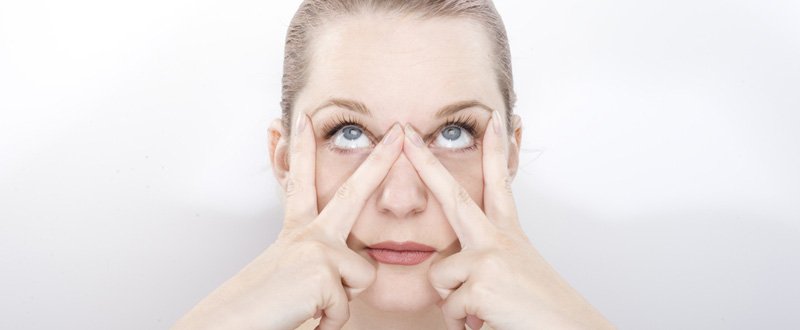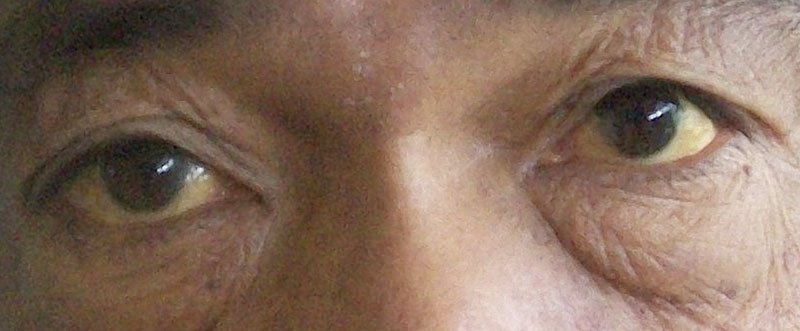Men and women have sought better eyesight without glasses for decades, and several gurus who advocate a healthier lifestyle as a cure for all ailments have recommended eye exercises to provide freedom from spectacles. These exercises were proclaimed as the revolution in eye care as early as the 1920s and had been advocated as such off and on. The claims range from “never needed glasses again” to “grandma, throw the spectacles away”, but the veracity of these statements has never held up to scientific scrutiny. Experts continue to reiterate that the only way to remove glasses is surgical, but also add that the eye exercises, if done under supervision, are not harmful to eye health. It is therefore up to the individual to try them out, with a healthy dose of skepticism, to see if they work.
These exercises are not a part of the specific ophthalmologist supervised programs to correct particular eye alignment issues (like convergence insufficiency) and other binocular vision problems, or to enhance dynamic visual skills. These exercises claim to correct refractive errors, that is nearsightedness, farsightedness, and astigmatism, which are errors stemming from altered eye anatomy or structure which you are born with.
What causes refractive errors?
- Myopia or Nearsightedness: When your eyeball is too long, light rays focus at a point before the retina, meaning your distance vision remains blurred more in comparison to near vision. This is called nearsightedness and is corrected using a system of concave or minus lenses.
- Hypermetropia or Farsightedness: When the eyeball is too short, you are unable to focus on near objects because light rays entering your eye, focus behind the retina, the light-sensitive portion of the eye. This is called farsightedness and can be corrected using a system of convex or plus lenses.
- Astigmatism: When the two meridians of the cornea or lens (both of which constitute the major refractive power of the eye) do not focus at the same point, the rays of light entering your eye focus at different points. This results in a visual blur and is corrected using a system of cylindrical lenses, which are denoted with a plus or minus power and an axis ranging from 0 to 180 degrees.
- Presbyopia: The natural lens of the eye has a remarkable ability to focus on both near and distant objects by changing its shape or curvature. Over time, usually after the age of forty years, the lens loses its ability to change its shape due to loss of elasticity, and can no longer accommodate focusing at different distances. It results in a visual blur for near vision, typically resulting in the need for near vision glasses around the age of forty. It is called presbyopia and is treated using a system of plus lenses, like hypermetropia, even though the reason for the visual blur is entirely different for both the errors of refraction.
What is the remedy for refractive errors?
- Change the refractive power of the eye by adding lenses as required. This may be done by using glasses, contact lenses, implantable contact lenses or even refractive lens exchange. This means that the light entering the eye is focused on the retina correctly, resulting in perfect vision. The first two modalities are for temporary vision correction, while the latter two surgical modalities are a definitive solution. Each of these modalities are discussed in greater detail in their respective categories.
- Change the refractive power of the cornea of the eye. This may be done by LASIK, or laser surgery, which changes the shape of the cornea surgically with high precision to ensure that light rays fall sharply on the retina resulting in correct
- Change the shape and length of the eyeball. Earlier in the 1970s some attempts were made to alter the length of the eyeball, especially for myopia, shortening of the eye was attempted but did not meet with clinical success. These attempts are therefore not relevant clinically in the current era of modern refractive surgeries.
Can eye exercises achieve what lenses and surgery can?
The answer to this question is best addressed by asking yourself a set of ancillary questions. If the answer to this is affirmative, then yes, eye exercises can cure refractive errors. If eye exercises cannot address the physiological and structural reason for needing glasses for better vision, it stands to reason that their results will be sub-optimal.
- Can exercising your eyes change the shape of your eyeball, by making it longer or shorter, or changing the dimension of one of the axes of the eyeball sphere (as needed for astigmatism)?
- Can eye exercises change shape and power of your cornea, and result in light being focused precisely on the retina?
- In case of astigmatism, can the exercises reshape the irregular surface f the eye resulting in precise focusing of light on the retina?
- Can eye exercises restore the elasticity of the natural lens of the eye that has been lost due to the change in its protein content, thereby alleviating presbyopia?
The answers to these questions, objectively and in one word, is NO since the shape and power of the eye cannot be altered with any degree of reproducibility and conviction. The officials at the American Academy of Ophthalmology evaluated all the scientific evidence and published research papers available to address this question and issued this statement in 2004:
It is not clear if patients purchasing these programs for use at home outside of the controlled environment of a research study will have any improvement in their vision. No evidence was found that visual training has any effect on the progression of myopia. No evidence was found that visual training improves visual function for patients with hyperopia or astigmatism. No evidence was found that visual training improves vision lost through disease processes such as age-related macular degeneration, glaucoma or diabetic retinopathy.
In fact, most people who advocate the use of these exercises, and market them commercially, usually do so with a disclaimer that absolves them of responsibility. They do promote that these exercises are safe, healthy alternative to glasses, contacts and even laser surgery, but also invariably add that the rate at which your eyesight improves and the extent to which it improves, is dependent on the individual and no two people react to the exercise program in the same way. This lack of conviction in small print is because these exercises, which may train the eye to see better, are not addressing the anatomical and optical problem that results in poor vision.
That said, it is important to keep in mind that there is a specific component of the refractive error which may be due to the environment: for instance due to prolonged near effort or focusing on computers and smartphones as also due to excessive strain. There is no doubt that this component of refractive error stands to benefit significantly from eye exercises, and these patients can get to rely less on their glasses after exercising.
What is the verdict on exercises?
It is important to recognize that even though refractive errors may be hereditary and due to a structural change in the shape and size of the eyeball, cornea and lens, but there may be certain environmental causes at play, such as stress due to prolonged near work, reading and working on computers and other visual display devices. The first component of your refractive error is not amenable to correction by exercises for obvious reasons. The environmental factors such as focusing stress and fatigue may benefit from eye exercises.
It is also imperative to keep in mind the fact that there is no definite scientific research that demonstrates eye exercises can effectively reduce or eliminate refractive errors or decrease your dependence on glasses or contact lenses while improving your eyesight. There is no robust scientific evidence to suggest that these techniques work, which is why your eye doctor and optometrist are never enthusiastic about recommending these exercises for vision correction and prefer for you to try glasses and or contact lenses instead.
What are the basic techniques of eye exercises?
There are several commercially available exercise programs online, which are said to be devised by experts in this field. Most of them are similar and do not offer any guaranteed results. All of them come with a disclaimer that the results may vary from person to person, and the duration of exercise for optimal results is also not specified. The basic tenets, however, around which all exercise programs are built include the following:
1. Blinking
Blinking is a reflex function, and even though so claimed, there is no conclusive evidence that it helps improve your eyesight. However, in the current ergonomic practices, conscious blinking is a good idea since our blink rate reduces significantly when sitting in front of the computers, televisions or smartphones. Blinking redistributes the tear film and makes the eyes lubricated, it also provides the eyes some much-needed rest, therefore decreasing fatigue and strain.
The think and blink method is the cornerstone of principles for computer users, especially in patients with computer vision syndrome and dry eyes. The key is to repeat the exercise many times, throughout the day.
- Slow Blink- For 2 minutes, you must blink your eyes every 30 seconds, definitively closing them.
- Quick Blink- For 2 minutes, you must blink your eyes every 4 seconds, rapidly, for optimal benefit.
It must be performed several times during the day to achieve the best results.
2. Palming
The technique of covering both eyes gently with your palms is called palming. It helps by relaxing the eyes and also resulting in redistribution of tears and lubrication of the eye surface. Experts recommend that you must take a deep breath and relax your neck muscles, closing your eyes. Make sure your forearms and elbows are well supported, and then close your eyes. Gently cup your eyes in the hollow of your palms for about a minute, breathing normally. Experts recommend repeating several sets of this exercise, several times a day for optimal results.
3. The Figure of Eight or circular eye movements
You are supposed to imagine a large “8” figure in front of you, about six feet away, and you must revolve your eyes to trace its shape slowly in the clockwise direction. This process must be repeated for three to five minutes. After this, you must trace the shape of “8” in the anti-clockwise direction for the same duration.
This must be done in multiple sets, several times during the day for best results.
4. Convergence and zooming
Convergence exercises are to strengthen your near vision muscles, and also to help delay presbyopia by exercising the muscles responsible for accommodation. Focus on a pencil tip held an arm’s length away. Focus on something far away to relax your eyes. Repeat this cycle for two minutes.
Slowly bring the pencil tip closer until it is about 3 inches away from your face or the tip becomes blurred. Don’t take your eyes off the pencil tip and try and focus on it till it becomes clear again. Move the pencil back to its original position with your arm stretched out as much as possible. Repeat this for at least ten minutes, and several times a day.
5. Side to side movement
Moving the eyes conjugately, from side-to-side also is said to relax the eyes and improve vision. For this, after sitting in a relaxed position, you must shift your eyes to the right, looking at something at least six to eight feet away. You must hold your gaze in that direction for a few seconds before moving your eyes to the other extreme the same distance. You must do this for three to five minutes, and the reverse the order of your gaze, starting first from a left extreme gaze and moving to the right, for another three to five minutes. This also must be performed in multiple sets, repeated during day for best results.
What about eye yoga?
Well, eye yoga is no different from eye exercises regarding the scientific basis for addressing refractive errors, except that it has been given a name more associated with holistic and organic healing. Most yoga gurus advocate the use of the eye exercises as prescribed earlier, in association with either breathing techniques, or relaxation techniques. While it is difficult to deny the “feel good” factor that is inevitable with yoga techniques of relaxation, the scientific verdict on yoga curing errors of refraction is the same as for conventional eye exercises.
Most gurus also advise personal affirmations and visualization of your eyesight improving to aid with these techniques as well. This includes telling yourself multiple times during the day that you do not need glasses and can see perfectly without them. Also, you will be asked to visualize how crystal clear your vision is even without your glasses or contact lenses, to help “train your mind to accept a positive outcome”.
While your doctor will never ask you not to practice “eye yoga”, if you ask your yoga teacher directly, he or she will not advise you throw away your glasses either. Since specific yogic postures and exercises may impact your eyes adversely in chronic conditions like glaucoma, you must discuss your yoga regimen with your eye doctor before starting your training.
What are the primary techniques of eye yoga?
The techniques of eye yoga are not very different from those of eye exercises. The salient features of these techniques include:
- Blinking and palming as in eye exercises
- Eye movements as defined earlier in this article with one significant difference. One must inhale when the eye looks up, and expel the breath gradually when looking down. Similarly when looking away from the “self” one must take a deep breath, and exhale when looking towards the nose, or converging.
- Yoga emphasizes on relaxation techniques that make the mind rule over matter. So it encourages you to be aware of your bodily functions like breathing while doing any exercise. After exercises, you are encouraged to lie down in the shava-asan, or the dead- pose, to help relax all your muscles.
- Several gurus encourage you to exhale consciously to the sound of the holy Om, thereby harnessing the positive energy of the universe.
- Yoga is best learnt from a trained guru for best results.
- Certain yoga postures like shirsha-asan or upside down position, and poses that simulate the Valsalva maneuver are not advised for glaucoma patients, and these patients must discuss their exercise program with their eye care practitioner before embarking on a rigorous exercise regime.
What if the exercises do not improve my vision?
Eye exercises usually do NOT improve vision, as is evidenced from several well designed clinical trials. They can, however, help with binocular vision, errors of fusional reserve like convergence insufficiency and certain other eye disorders of ocular motility. These require a specific program customized to the needs of that particular patient, and there is no one size fits all.
In case you do not want to wear your glasses, there are several options available, which may be temporary or permanent surgical solutions. These include:
- Contact lenses for better vision without glasses
- Orthokeratology: which is the science of wearing specialized contact lenses that mould the cornea shape helping in reducing or eliminating refractive error over time.
- Surgical options for spectacle removal: These include LASIK and all its variants, Implantable Collamer Lenses, Refractive Lens Exchange or Clear Lens Extraction, as well as cataract surgery. All of these may be used alone, or in conjunction with another refractive procedure, for optimal results, depending on the visual needs, and eye structure and refractive error of the patient.
Is better vision without glasses possible?
The answer to this question is an unequivocal YES. Better vision without glasses today is a very realistic and possible scenario. However, if you were to ask if better vision without glasses is possible with eye exercises alone, your doctor will not be so enthusiastic in his or her response.
Today, technology in terms of both machines and surgical techniques has advanced so much that almost anyone with a refractive error and no significant diseases of ocular structure and function can lead a life entirely spectacle-free.
The best option for each patient, however, requires a comprehensive eye examination by a skilled eye care professional. Your ophthalmologist will perform specific tests before recommending the best possible solution for your visual needs, which will be the most effective and the safest option for you.
Each one of these options has been discussed in greater detail individually to help you have an informed conversation with your eye doctor. The branches of Eye7 Chaudhary Eye Centre are well equipped to take care of all your visual needs, including those about orthoptic exercises, which are essential for errors of fusion and binocularity. In case you want freedom from glasses, the doctors will be happy to discuss all treatment options and guide you to the best possible medical or surgical recourse.






